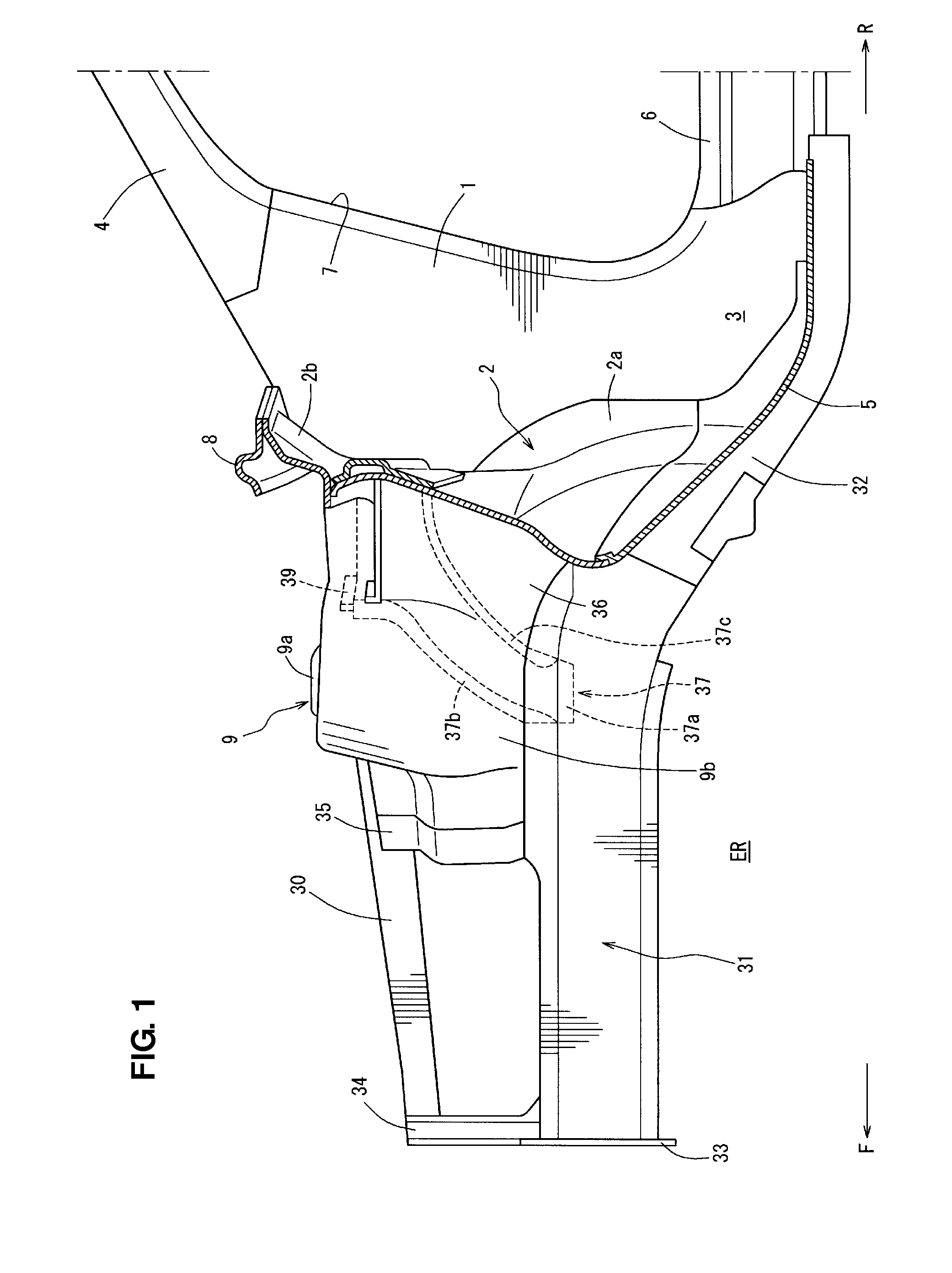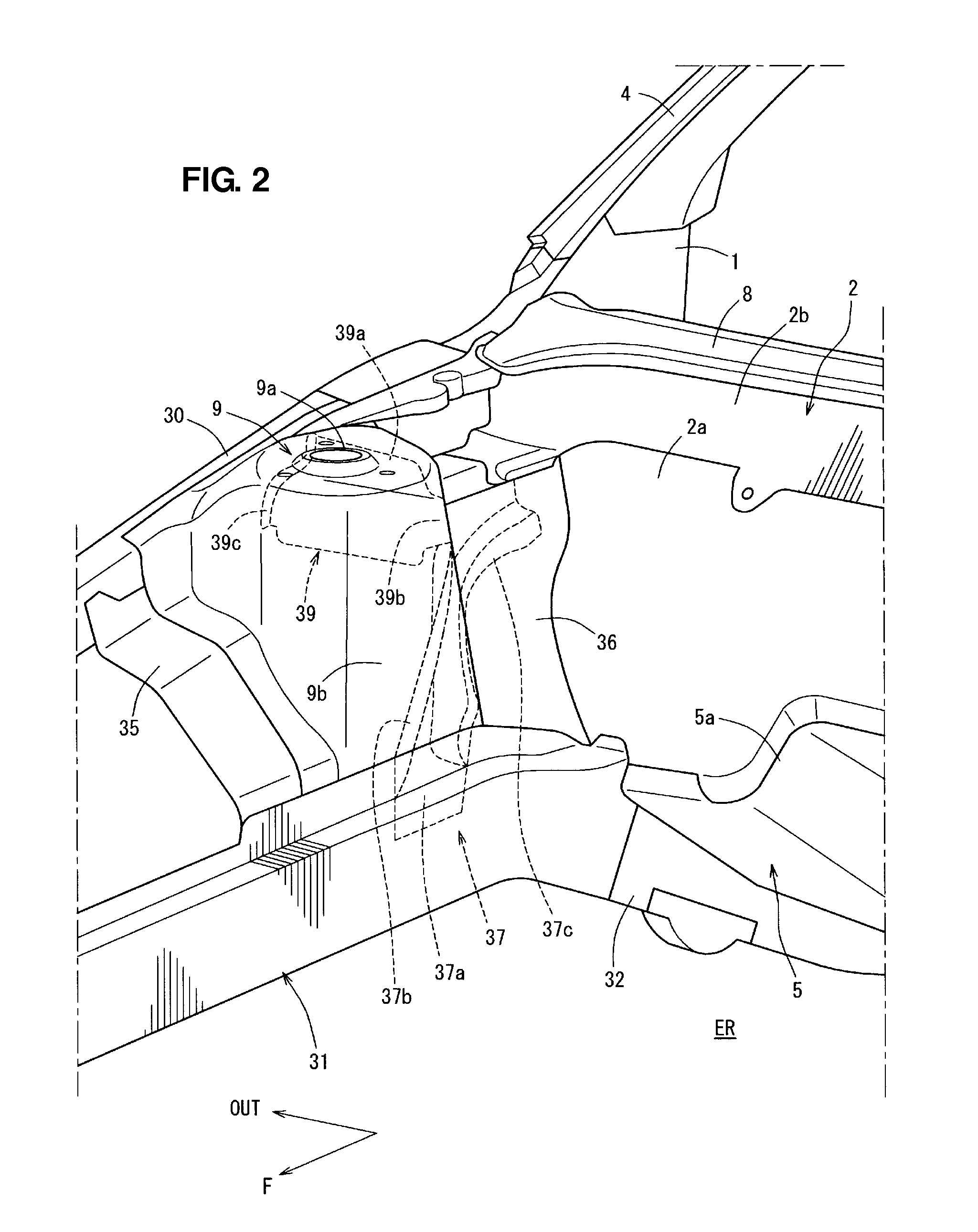Vehicle-body front structure
a front structure and vehicle technology, applied in the direction of roofs, transportation and packaging, vehicle arrangements, etc., can solve the problems of improper deformation of the apron frame outwardly in the vehicle width direction, the disconnection of the hinge pillar and the dash panel, and the difficulty of ensuring an appropriate vehicle function
- Summary
- Abstract
- Description
- Claims
- Application Information
AI Technical Summary
Benefits of technology
Problems solved by technology
Method used
Image
Examples
Embodiment Construction
[0024]Hereafter, a preferred embodiment of the present invention will be descried referring to the accompanying drawings.
[0025]FIG. 1 is a side view of a vehicle-body front portion, when viewed from a vehicle center in a vehicle width direction, and FIGS. 2 and 3 are a perspective view and a plan view of FIG. 1, respectively. FIG. 4 is a sectional view taken along line A-A of FIG. 3, FIG. 5 is a sectional view taken along line B-B of FIG. 4, and FIG. 6 is a perspective view of a major part of the vehicle-body front portion, when viewed from below. In these figures, an arrow F shows a vehicle front side, an arrow R shows a vehicle rear side, an arrow IN shows a vehicle inside, and an arrow OUT shows a vehicle outside.
[0026]As shown in FIGS. 1 and 2, a pair of hinge pillars 1, 1 (only a right-side hinge pillar is shown in the drawings) is provided at both sides of the vehicle. The hinge pillar 1 is a vehicle-body rigidity member which comprises a hinge pillar outer 1a (see FIG. 5) and...
PUM
 Login to View More
Login to View More Abstract
Description
Claims
Application Information
 Login to View More
Login to View More - R&D
- Intellectual Property
- Life Sciences
- Materials
- Tech Scout
- Unparalleled Data Quality
- Higher Quality Content
- 60% Fewer Hallucinations
Browse by: Latest US Patents, China's latest patents, Technical Efficacy Thesaurus, Application Domain, Technology Topic, Popular Technical Reports.
© 2025 PatSnap. All rights reserved.Legal|Privacy policy|Modern Slavery Act Transparency Statement|Sitemap|About US| Contact US: help@patsnap.com



